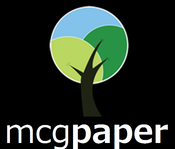How To Make - Shrink Art - Incredible Shrinking Photograph Article
Discover how to print, bake, and transform your digital photos into vibrant, wearable keepsakes using inkjet shrink plastic—perfect for jewelry, keychains, and crafts.
🧩 How to Make Shrink Art
The Incredible Shrinking Photograph
By: Elinor Stecker-Orel – Courtesy of PhotoHighway.com™
Printing on paper is fun, but printing on plastic? That’s where the real creative magic begins. As both an artist and craftsperson, I’ve loved exploring unusual printable surfaces—and shrink art plastic has become my latest favorite. Until recently, inkjet users were left out of the shrink-art game. But with Super Color Shrink—also known as Shrink Art—you can now print photo-quality images directly onto shrink plastic sheets.
📸 Choosing & Preparing Your Image
Start with a light-toned image, or adjust brightness in your editing program—colors darken significantly when baked. I learned this the hard way after my lotus photo's grays turned nearly black.
Do all your enhancements first, then resize the image—remember, shrink plastic reduces to about 50% of its original width and height. To save time and materials, lay out multiple photos on an 8.5" x 11" canvas and print them all at once. This is easiest in programs that support multi-layer layouts.
🖨️ Printing on Shrink Plastic
Before printing, remove all paper from your printer and insert a single sheet of Super Color Shrink. Set your printer to “Glossy” or “Transparency” mode for best results. When your print finishes, do not touch the image—ink will remain wet for up to 30 minutes, especially dark tones.
After drying, cut out each image using sharp scissors like Fiskars MicroTips. Be sure to round all corners—sharp plastic edges become dangerously pointy when baked. Punch any necessary holes (e.g., for charms or pulls) now, before baking.
🔥 Baking Your Shrink Art
Before cutting, identify the printed side—it must face down on your baking tray. Hold the sheet at an angle to see the slightly raised texture of the printed surface. Bake on a nonstick or parchment-lined tray to avoid sticking. I learned the hard way: do not skip this step!
Preheat your oven or toaster oven to 275°F (135°C)—never use a microwave. Bake your pieces for 5–6 minutes while watching closely. The plastic will curl before flattening out—this is expected. Once flat, remove the tray and let it cool before handling.
🎨 Finishing Touches & Painting
Some images may lift or rub off in spots where the plastic touches the tray. I fixed this with a colored marker. If your finished piece looks too translucent, paint the back with white acrylic paint or nail polish. I prefer Krylon spray paint—it dries faster and holds better than enamel.
Protect the front by masking it with painter’s tape while you spray. Be sure to avoid leaving fingerprints—tape your fingers if needed before handling your art.
✨ Assembling Your Creations
Once fully dry, you’re ready to turn your shrink pieces into finished projects. Glue on jewelry posts, earring hooks, pin backs, magnets, or string them into charms. I turned my lotus images into earrings and a tree photo into a wearable pin.
